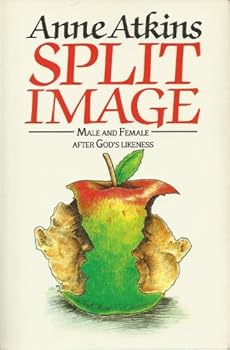Split Image: Male and Female After God's Likeness
Revised and updated edition of this book in which the author encourages Christians to come to the Bible with a fresh mind to discover God's intention in creating male and female, and draws some... This description may be from another edition of this product.
Format:Paperback
Language:English
ISBN:0802802508
ISBN13:9780802802507
Release Date:January 1987
Publisher:Eerdmans Pub Co
Length:256 Pages
Weight:0.58 lbs.
Related Subjects
Christian Books & Bibles Inspirational Religion Religion & Spirituality Spirituality TheologyCustomer Reviews
1 rating
A challenge to all who read it
Published by Thriftbooks.com User , 22 years ago
"So God created man in his own image; in the image of God he created him, male and female he created them."This verse (Genesis 1:27) is the kick off point for a fascinating exploration of what it means to be created in God's image, particularly looking at the implications of their being two genders.I first read this book by Anne Atkin in about 1996 and have just re-read it. It is a well thought out and well presented attempt to find out what God says about the topic in the Bible, without being held hostage to any of the entrenched views that seem to prevail.Both traditionalists and feminists will have bones to pick with the author. Traditionalists (who are apt to call themselves "Bible believing Christians") will have to acknowledge her trust in God's word, her scholarship and her integrity, as she refuses to twist scriptures or let anyone else get away with that either. Feminists will have to acknowledge her passion for justice and fairness for women. Both sides will probably complain that she doesn't follow her arguments to the conclusions they have reached. But then she gives good reasons why this is so.The 10 chapters cover "Splitting the image", "Difference", "Equality", "Interdependence", "Work", "Authority", "Marriage", "Singleness", "Feminism" and "Back to the Image".She starts with the thesis that there are undeniable reproductive differences between every woman and every man; possible, almost indefinable, differences between the "masculine" and the "feminine"; and probable, general differences between many women and many men. But apart from limited situations when reproductive differences justify specific discrimination (e.g. only women frisk searching other women) she says the significance of the other differences is to indicate that the two genders NEED each other.Each chapter looks at the topic with the guidance of scripture. But the meatiest chapters for scriptural exegesis are "Work", "Authority", "Marriage" and "Singleness". In "Work", she looks at the origin of the traditional (Western, post-industrialised) idea of men as breadwinners and women as homemakers, but points out that scripture does not confine people to such concrete "roles". Such division of labour can work but is not the only way sanctioned by scripture. She says that the Bible does not suggest different work for the two genders, apart from the tasks that are biologically defined in reproduction.In "Authority", she strikes a path that will not satisfy the extremists on either side. She undermines the traditional interpretations of scripture that would conclude that women cannot have authority over men. First she looks at the nature of authority. In marriage, she argues that wives DO have (not MAY have) authority over their husbands. After her survey of the scriptures, she shows that women CAN have authority over men and she concludes that the implication of these scriptures is not that there should necessarily be AS MANY women in authority as men, but th





